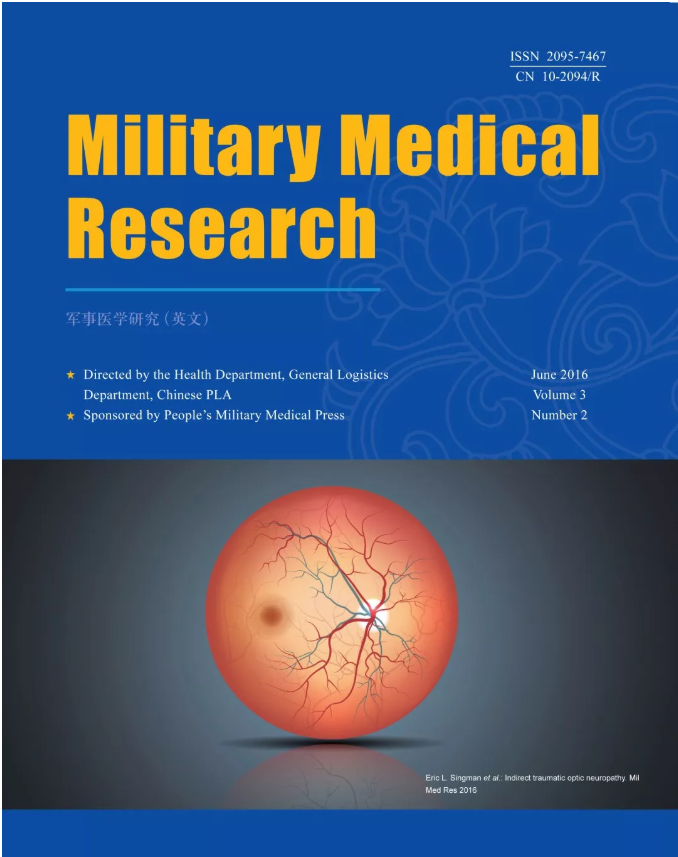先天性脑积水:遗传病因学和分子机制的最新进展综述
IF 22.9
2区 医学
Q1 MEDICINE, GENERAL & INTERNAL
引用次数: 0
摘要
先天性脑积水(CH)的全球发病率约为每五百名新生儿中就有一人患病,其发病因素是多方面的。遗传因素是导致先天性脑积水发病的主要因素,流行病学证据表明,全球高达 40% 的病例与遗传因素有关。了解个体的遗传易感性可大大提高预后的准确性,同时有助于临床决策过程。然而,目前只有不到 5%的人类病例能准确找到遗传病因。需要对更多的 CH 病例进行全面的基因测序,以发现更多潜在的基因位点。更深入地了解其潜在的遗传学可能会对这种脑部疾病的分子和细胞基础提供宝贵的见解。除了目前与 CH 相关的 4 个基因(两个 X 连锁基因 L1CAM 和 AP1S2,两个常染色体隐性基因 MPDZ 和 CCDC88C)外,本综述还概述了通过基因测序技术在人类中发现的相关基因。其他基因主要参与导水管异常、睫状肌运动和神经系统发育。本文进一步概述了通过动物模型基因编辑技术揭示的与 CH 相关的前瞻性基因,主要集中在 4 个途径,即纤毛合成和运动、离子通道和运输、赖斯纳纤维(RF)合成、细胞凋亡和神经发生。值得注意的是,纤毛运动的正常功能为脑室内的脑脊液(CSF)循环提供了重要的推动力,而纤毛相关基因的突变则是导致这种疾病的主要原因。迄今为止,人类仅发现了有限的 CH 相关基因。结合基因型和表型进行疾病诊断是医学领域的新趋势。动物模型有助于我们深入了解 CH 的发病机制,并有助于我们了解 CH 与肾囊肿、脊柱侧弯和心肌病等相关并发症的关系,因为这些基因也可能在这些疾病的发病过程中发挥作用。在动物身上发现的基因是新疗法的潜在靶点,但还需要通过未来的人体研究来进一步验证。本文章由计算机程序翻译,如有差异,请以英文原文为准。
Congenital hydrocephalus: a review of recent advances in genetic etiology and molecular mechanisms
The global prevalence rate for congenital hydrocephalus (CH) is approximately one out of every five hundred births with multifaceted predisposing factors at play. Genetic influences stand as a major contributor to CH pathogenesis, and epidemiological evidence suggests their involvement in up to 40% of all cases observed globally. Knowledge about an individual’s genetic susceptibility can significantly improve prognostic precision while aiding clinical decision-making processes. However, the precise genetic etiology has only been pinpointed in fewer than 5% of human instances. More occurrences of CH cases are required for comprehensive gene sequencing aimed at uncovering additional potential genetic loci. A deeper comprehension of its underlying genetics may offer invaluable insights into the molecular and cellular basis of this brain disorder. This review provides a summary of pertinent genes identified through gene sequencing technologies in humans, in addition to the 4 genes currently associated with CH (two X-linked genes L1CAM and AP1S2, two autosomal recessive MPDZ and CCDC88C). Others predominantly participate in aqueduct abnormalities, ciliary movement, and nervous system development. The prospective CH-related genes revealed through animal model gene-editing techniques are further outlined, focusing mainly on 4 pathways, namely cilia synthesis and movement, ion channels and transportation, Reissner’s fiber (RF) synthesis, cell apoptosis, and neurogenesis. Notably, the proper functioning of motile cilia provides significant impulsion for cerebrospinal fluid (CSF) circulation within the brain ventricles while mutations in cilia-related genes constitute a primary cause underlying this condition. So far, only a limited number of CH-associated genes have been identified in humans. The integration of genotype and phenotype for disease diagnosis represents a new trend in the medical field. Animal models provide insights into the pathogenesis of CH and contribute to our understanding of its association with related complications, such as renal cysts, scoliosis, and cardiomyopathy, as these genes may also play a role in the development of these diseases. Genes discovered in animals present potential targets for new treatments but require further validation through future human studies.
求助全文
通过发布文献求助,成功后即可免费获取论文全文。
去求助
来源期刊

Military Medical Research
Medicine-General Medicine
CiteScore
38.40
自引率
2.80%
发文量
485
审稿时长
8 weeks
期刊介绍:
Military Medical Research is an open-access, peer-reviewed journal that aims to share the most up-to-date evidence and innovative discoveries in a wide range of fields, including basic and clinical sciences, translational research, precision medicine, emerging interdisciplinary subjects, and advanced technologies. Our primary focus is on modern military medicine; however, we also encourage submissions from other related areas. This includes, but is not limited to, basic medical research with the potential for translation into practice, as well as clinical research that could impact medical care both in times of warfare and during peacetime military operations.
 求助内容:
求助内容: 应助结果提醒方式:
应助结果提醒方式:


